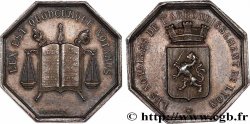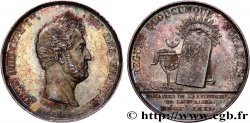E-auction 45-18772 - fjt_318307 - 19TH CENTURY NOTARIES (SOLICITORS AND ATTORNEYS) Notaires de Clermont-Ferrand n.d.
You must signin and be an approved bidder to bid, LOGIN TO BID. Accounts are subject to approval and the approval process takes place within 48 hours. Do not wait until the day a sale closes to register. Clicking on « bid » constitutes acceptance of the terms of use of cgb.fr private e-auctions.
Bids must be placed in whole Euro amounts only. The sale will start closing at the time stated on the item description; any bids received at the site after the closing time will not be executed. Transmission times may vary and bids could be rejected if you wait until the last second. For further information ckeck the E-auctions F.A.Q.
NO BUYER'S FEE.
NO BUYER'S FEE.
| Estimate : | 58 € |
| Price : | 30 € |
| Maximum bid : | 30 € |
| End of the sale : | 24 February 2014 18:38:00 |
| bidders : | 9 bidders |
Type : Notaires de Clermont-Ferrand
Date: n.d.
Metal : silver
Diameter : 33,5 mm
Orientation dies : 12 h.
Edge : lisse
Puncheon : corne ARGENT
Coments on the condition:
Exemplaire superbe
Catalogue references :
Obverse
Obverse legend : REPUBLIQUE - FRANÇAISE.
Obverse description : Tête de la République à gauche, son bandeau portant SUFFRAGE UNIVERSEL ; signature BARRE au-dessous.
Reverse
Reverse legend : LEX EST QUODCUMQUE NOTAMUS ; À L'EXERGUE EN TROIS LIGNES : NOTAIRES/ ARROND. CLERMONT-FERRAND/ PUY-DE-DÔME.
Reverse description : Sur une table aux pieds à tête de lion, une main sortant d'un nuage écrit à la plume , une balance et une prudence au sol.
Reverse translation : (Est Loi ce que nous consignons).
Commentary
La devise "Lex est quodcumque notamus" est une création du père Ménestrier en 1686 pour les secrétaires du roi qui ne s'en sont jamais servi. L'invention fut reprise par les notaires de Paris puis ensuite par les notaires de Province.








 Report a mistake
Report a mistake Print the page
Print the page Share my selection
Share my selection Ask a question
Ask a question Consign / sell
Consign / sell
 Full data
Full data









